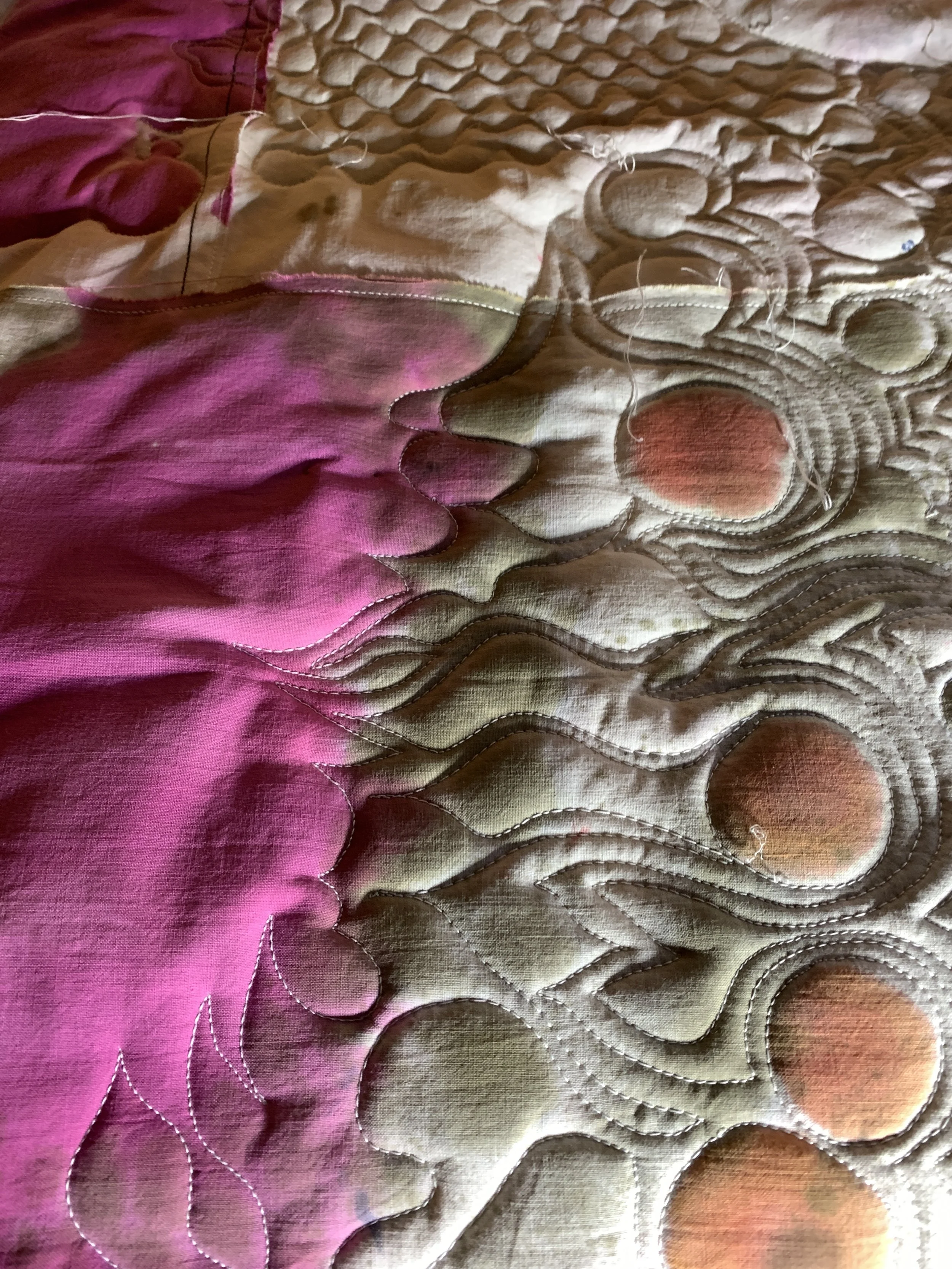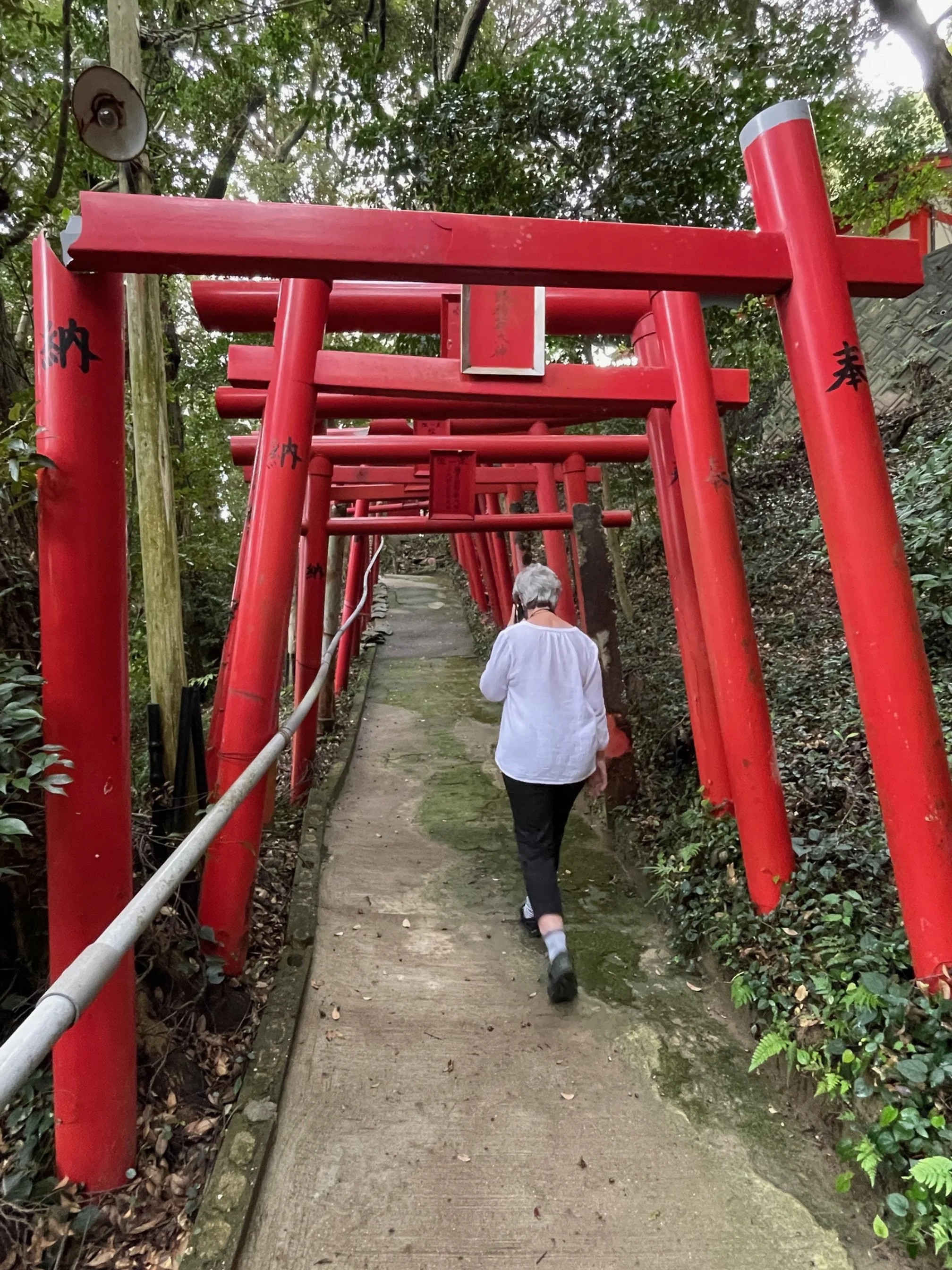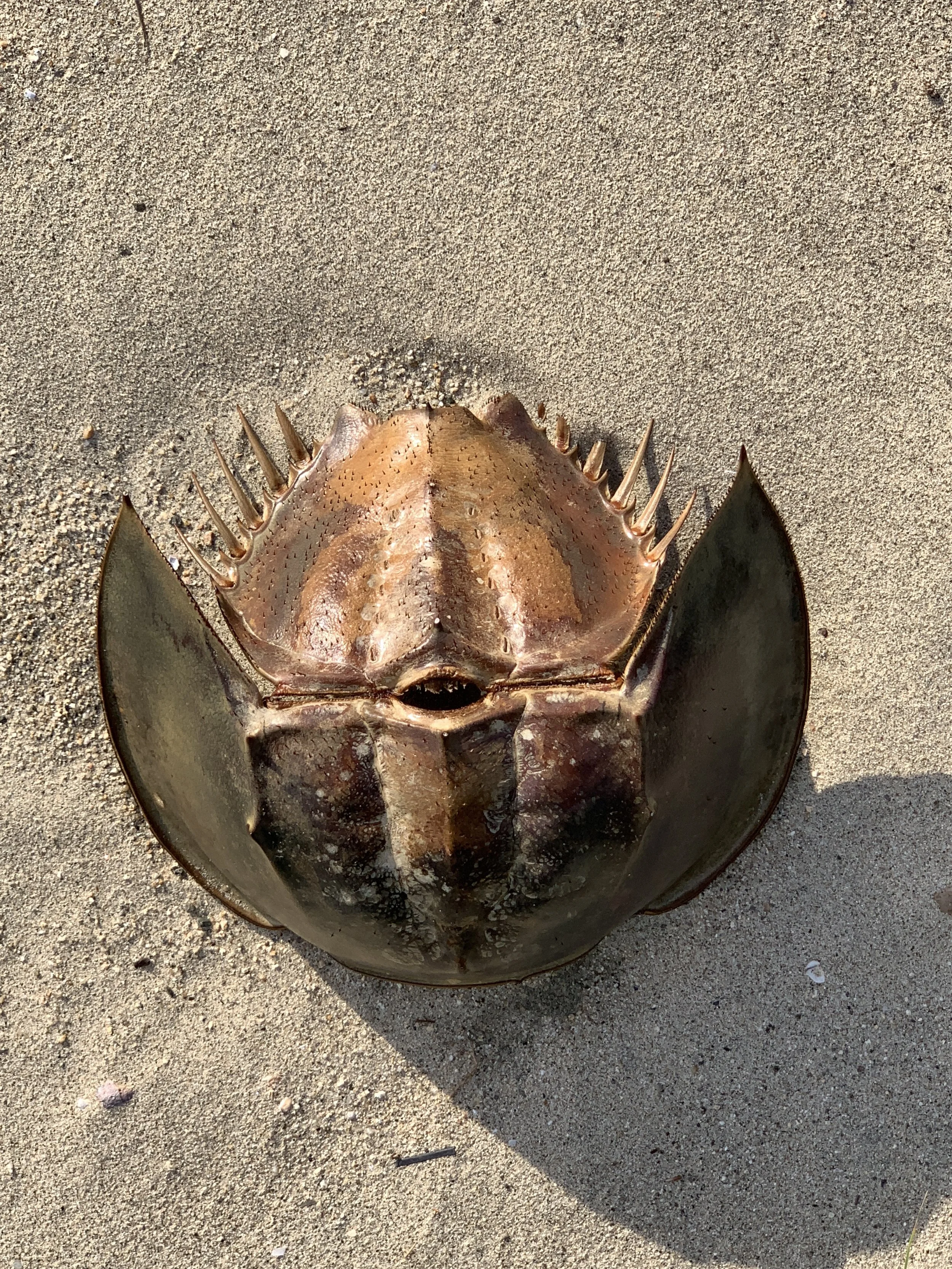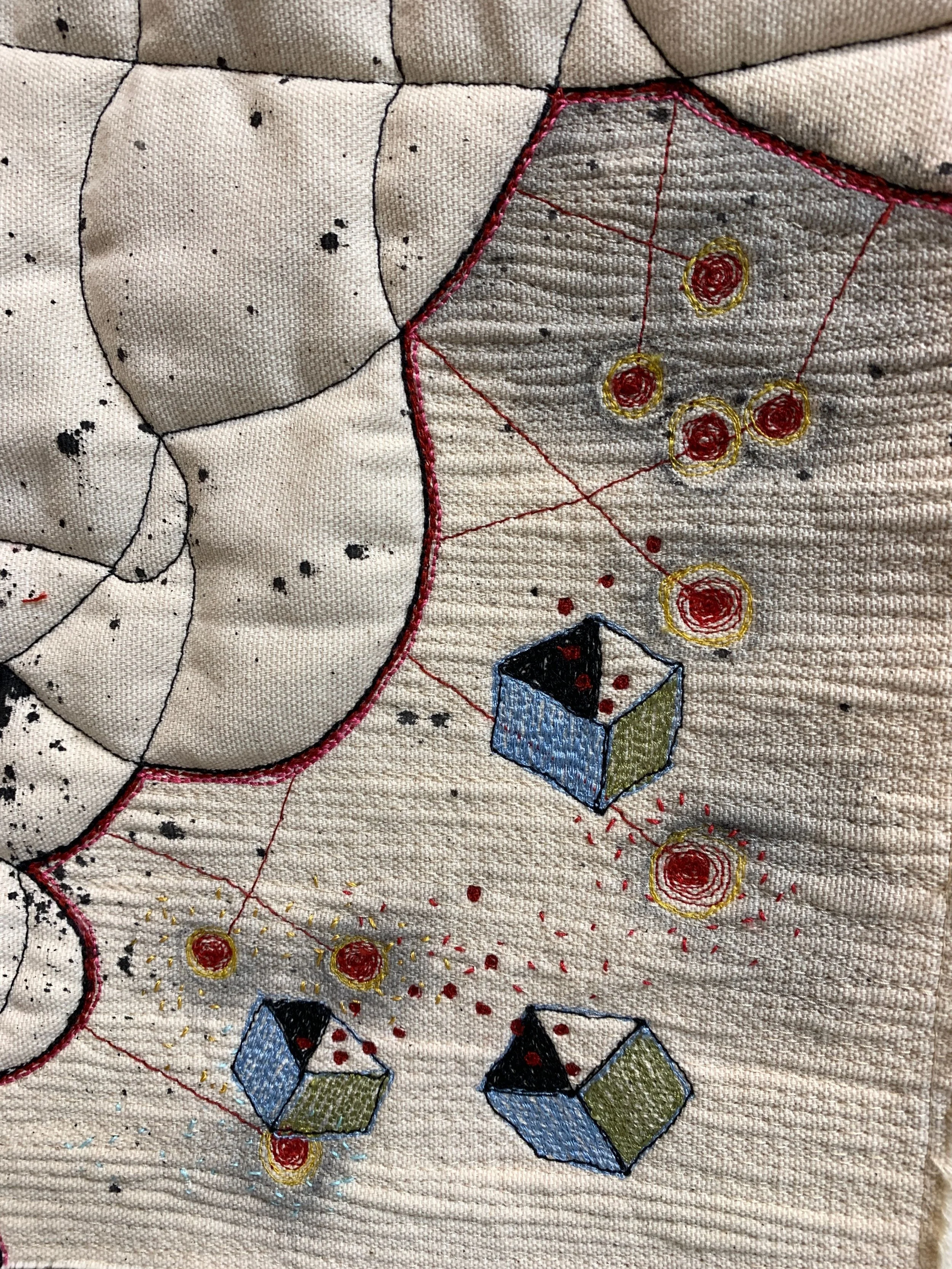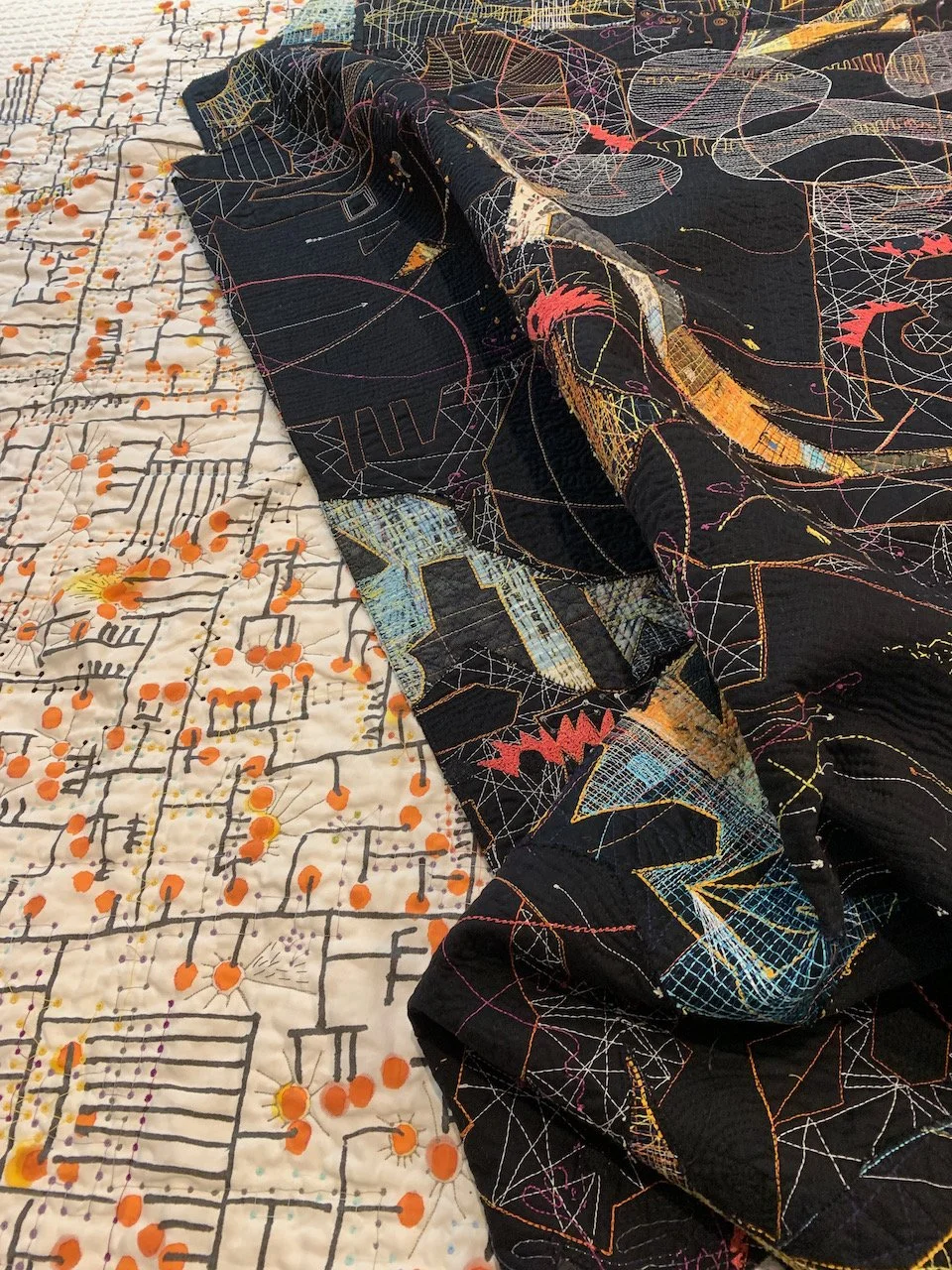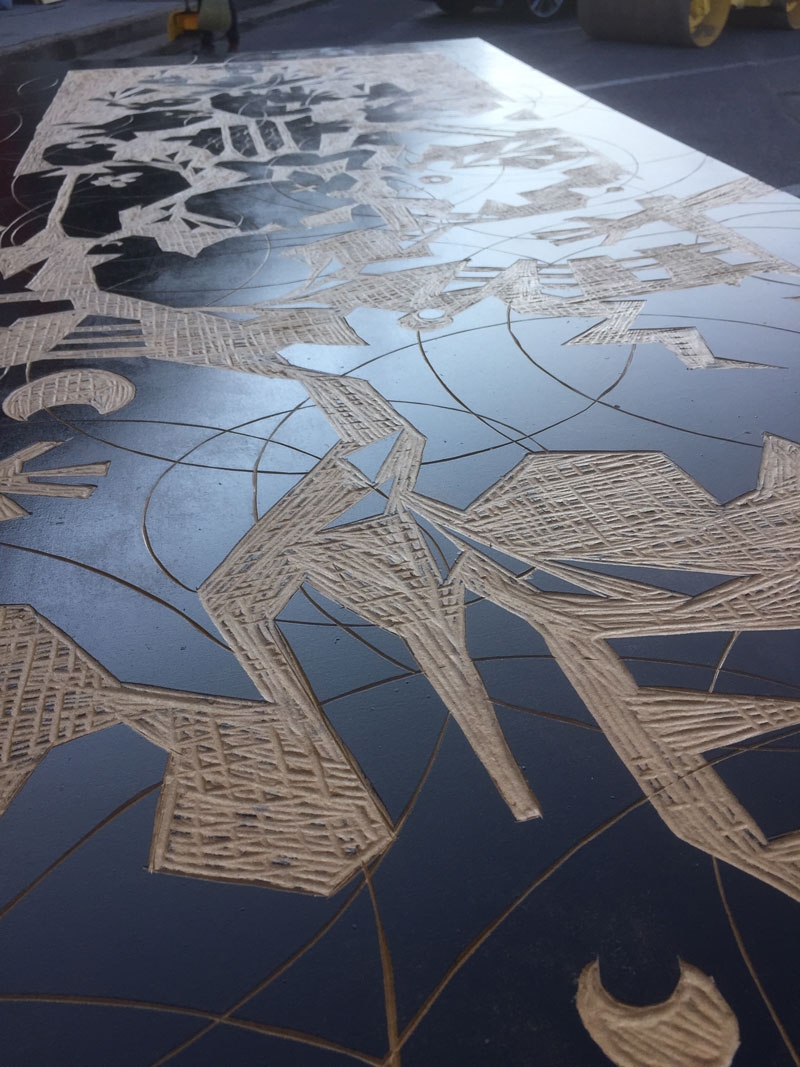96" x 44". That's how big this woodcut print is. And now, nervously and with great anticipation, the big reveal.....
After laying down a protective blanket, Five-in-One Social Club workshop goes to press.
Here's a print we pulled later on in the evening. It is an assemblage of an old bedspread and some cotton napkins. Love the way the color affects the print.
This is the quiltop I created for another print. Look for this one later on this week!
Beasty
Purchase your steamroller print here! There are some incredible designs to choose from.






